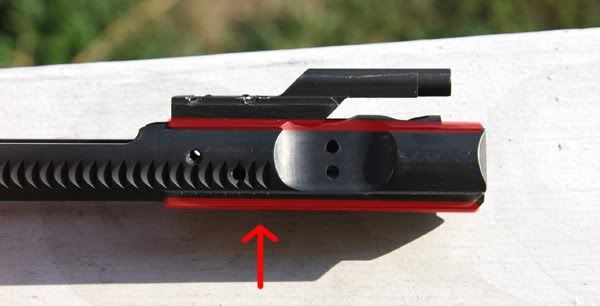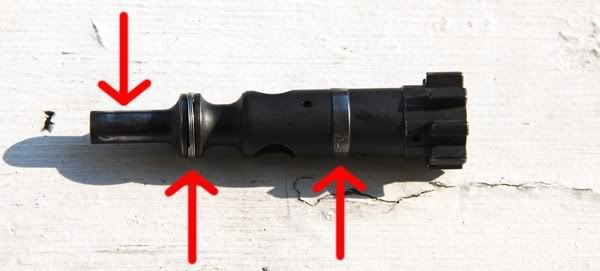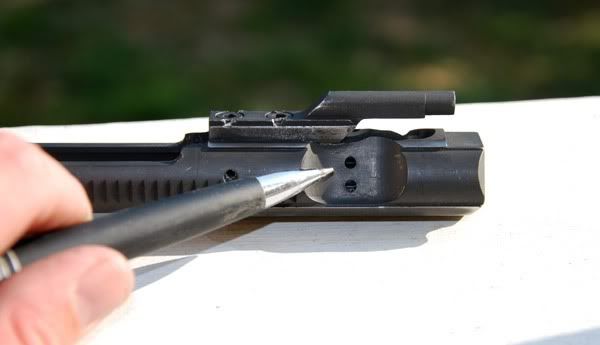You are using an out of date browser. It may not display this or other websites correctly.
You should upgrade or use an alternative browser.
You should upgrade or use an alternative browser.
I'm getting an AR!!!
- Thread starter bjones870
- Start date
RedNeckWino
New member
SWEET! How about posting some pics or links to the parts that have been selected. Often a good 4x40 or there abouts is a good beginning for basic optics. Much will depend on purpose of the rifle. If not totally sure about purpose, start small and hit the range. Shoot with friends that have similar rifles and try their equipment out before shelling out an ass pocket full of cash just to find out you really want something other. This might even include 2 or 3 optic choices with quick release in the future. Just a thought. Jeff
Complete upper and lower?
Most probably a Delton kit using a stripped lower. I'm sure the OP will clarify if I am wrong, but that is what Delton sells a ton of. I have one and am very happy with it for the price.
Technosavant
New member
CMMG makes both complete and stripped lowers. Their lowers are in spec (I have two), never heard any issues from those few I've seen who did have CMMG LPKs, so if it's a complete lower it should be good to go.
As for the upper, I don't read much bad about Del-Ton; good quality for the price.
It should be great to introduce you to the platform.
As for the upper, I don't read much bad about Del-Ton; good quality for the price.
It should be great to introduce you to the platform.
jackblack73
New member
Definitely lube it up. Wouldn't hurt to run a patch through the barrel either.
Ridge_Runner_5
New member
Disassemble the bolt and lube the components in there (including wiping down the exterior of the bolt carrier), run a damp patch through the barrel, and it wouldn't hurt to put a drop or two of oil on the trigger group, either.
From M4carbine.net:
And from QUIB:
From M4carbine.net:
Lubrication
Take a close look at the BCG. Wearing parts show their hand in the reduction via friction of the phosphate coating they contain. The general rule is, “if it’s white, lubricate it”
Apply grease/lubricant to the red areas shown and also a tad on the underside of the BCG where the hammer drags (yes, I turn staking of the gas key into absolute bloody murder, haha).

Apply lubricant to the areas of wear evidenced on the bolt (as shown). A drop or two of lubricant on the gas rings is beneficial.

The firing pin channel should never be lubricated.
I like to apply grease to the areas of obvious wear (as shown above) and a thin coat of lubricant over everything. Placing a couple of drops into the two holes on the right side of the BCG will effectively lubricate the gas rings of the bolt (something easy to do during training without further disassembly).

A bit of lubricant/grease on the top of the charging handle where it wears on the upper receiver is also a good idea as is a bit on the top of the hammer.
For a long time, the military advocated (and unfortunately in some units still does (institutional inertia is strong)) using less lubricant in the desert. The idea was that more lubricant attracts sand and/or other environmental fouling. This is one of those ideas that holds its roots in theory than actual practice. A wet, dirty weapon will always run better and longer than a dry, dirty weapon.
There is a lot of debate out there about lubricant. For general use, I prefer TW-25B for grease and Militec-1 for oil to lubricate the AR-15. However, most of the lubricants out there will do the job (though I do no recommend using anal ease on a rifle, ask me how I know!) Not all lubricants are equals and I advocate doing research on what’s right for you. One could probably write for days on aspects of different lubes for rifles.
So long as the system is kept lubricated, it will run for a long, long time. That said, some uses will eat lubricant far faster than others. Suppressors eat lubricant (especially when used with a full auto or SBR) far faster than with normal use. As such, lubricant needs to be applied more often with rifles that utilize sound suppressors. Proper application of lubricant for a non-suppressed, non-full auto rifle should be done every 300 to 500 rounds to ensure reliability.
Unless one is running a new gee-whiz coating on their BCG (such as FailZero, which has held up to testing quite well with no lubrication at all), lubrication should be made at the prescribed intervals to avoid weapons failures.
After lubrication, one should check the gas rings located on the bolt. No, the lining up of the gas rings does not cause the rifle to malfunction nor does it cause a singularity to open up in your living room. There are a couple methods to inspect if the gas rings are within specifications but this is the method I like:
-Lubricate and assemble the BCG
-Pull the bolt forward as far as it can go
-Place the BCG face down onto the bolt face on a hard surface, standing it upright
If the bolt retracts into the BCG under its own weight, then the gas rings should be replaced. Other valid methods exist but this is the most presumptuous and malfunction-reducing method that I know of. Some items exist, such as McFarland one piece gas rings, which will improve the longevity of the gas rings, and I fully support their use.
Functions Check
After every assembly, a functions check should be done on every rifle (this is technically a part of inspection). A functions check exists to ensure that the selector lever and rifle are properly functioning.
*This check should only be done on an unloaded rifle!!* I know it sounds silly to stress this point but, after all, no one is ever accidentally shot with a loaded rifle!
-Assemble the rifle completely
-Pull the charging handle to the rear and release
-Place the selector lever on, ‘SAFE’
-Pull the trigger, the hammer should not release
-Place the selector lever on, ‘SEMI’
-Pull the trigger to the rear. The hammer should release.
-Keep your finger held back on the trigger, pull the charging handle to the rear and release. The hammer should not fall. You should feel the sear reset.
-Place the selector lever on, ‘SAFE’
This completes the functions check for semi-auto AR-15’s.
And from QUIB:
Ridge_Runner_5
New member
Iron sights would be the lightest option, likely followed by a micro Aimpoint or mini red dot....
RockyMtnTactical
New member
Congrats. Post pics when you get it.



